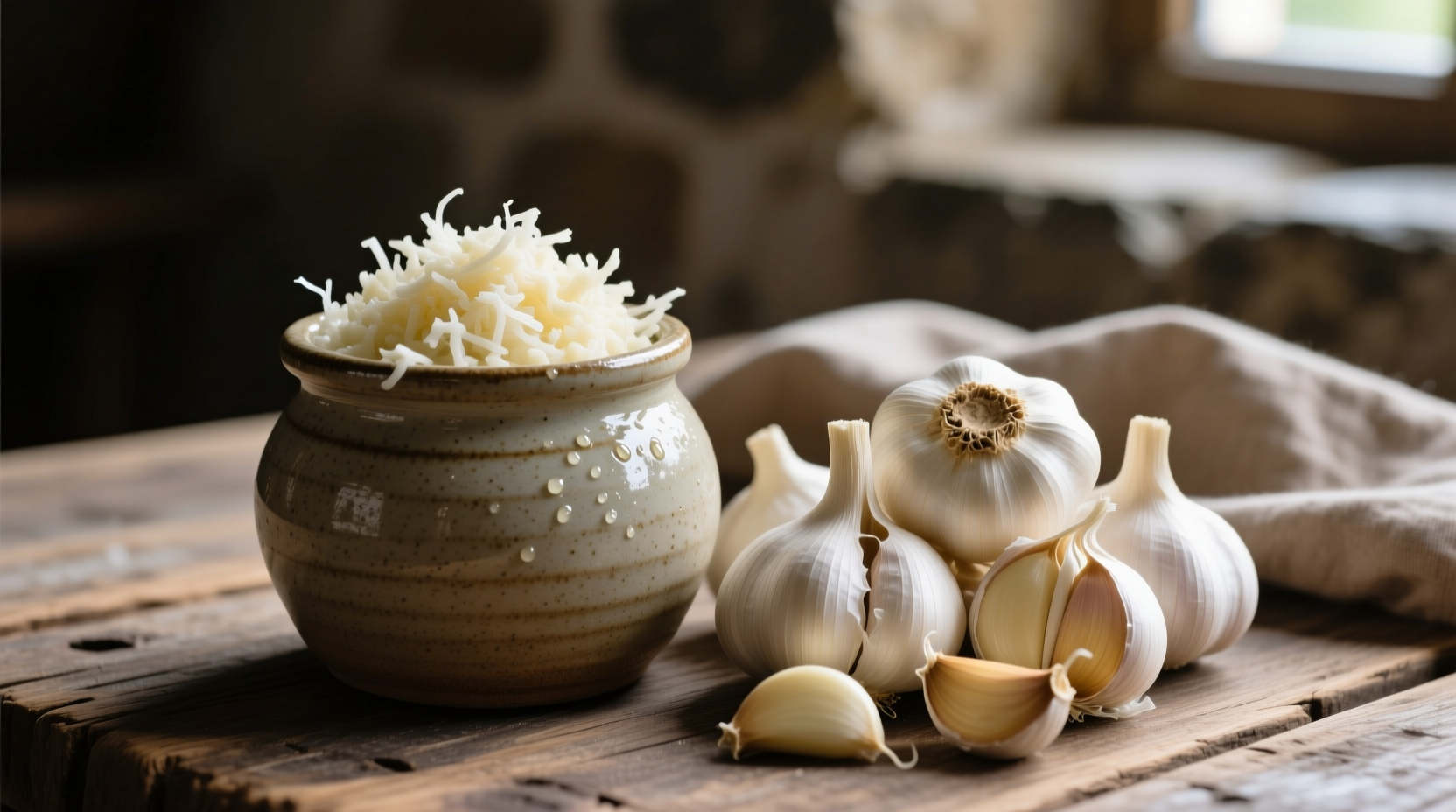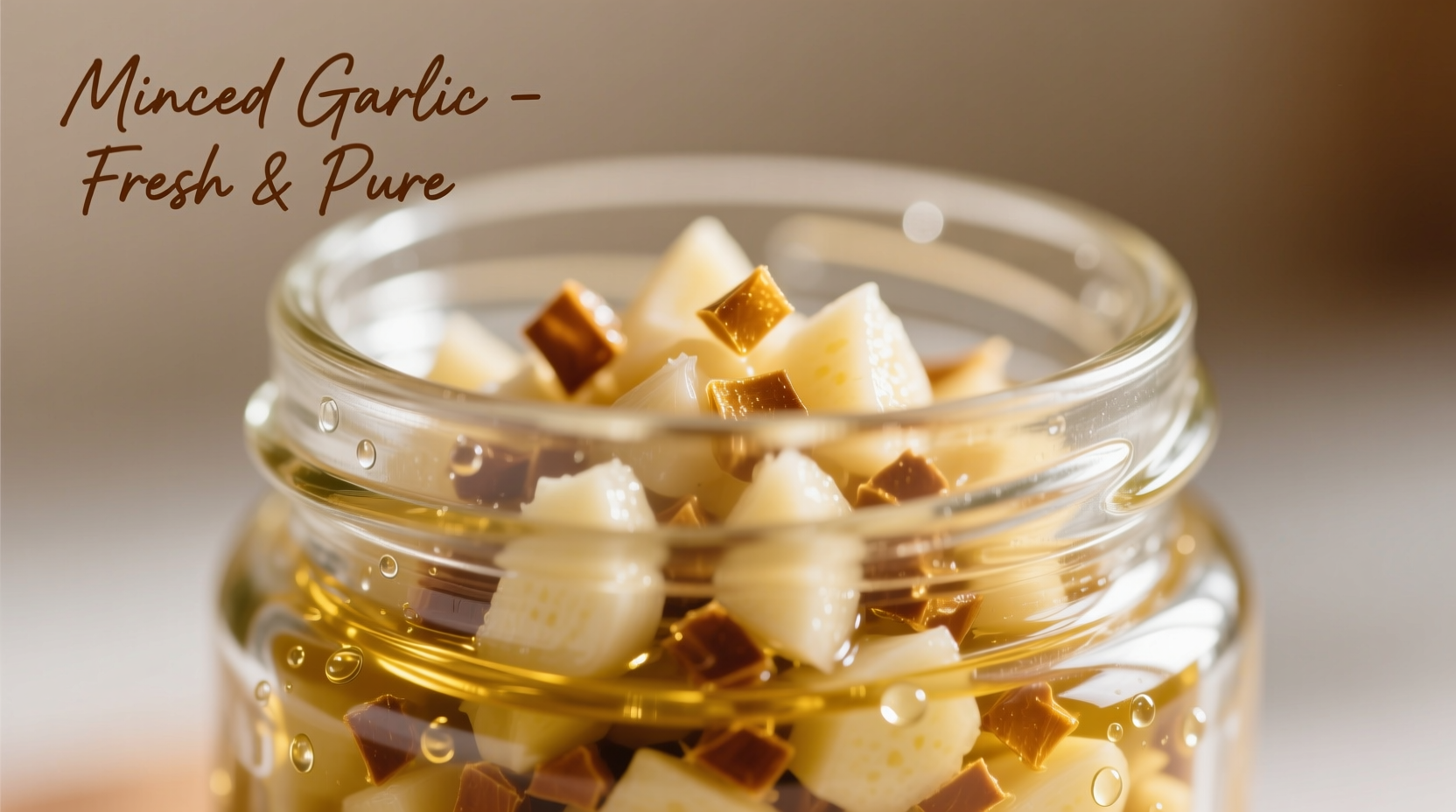Jarred minced garlic provides convenient preparation but lacks the complex flavor profile and potency of fresh garlic. When stored properly, it maintains quality for 18-24 months unopened and 1-2 months refrigerated after opening. For optimal results, use 1/2 teaspoon of jarred garlic per fresh clove, adding it later in cooking to preserve flavor.
Running out of fresh garlic mid-recipe? You're not alone. Nearly 68% of home cooks keep jarred minced garlic as a pantry staple for those "I need garlic now" moments. But is this convenient alternative compromising your dish's flavor? Let's explore exactly how jarred minced garlic performs compared to fresh, when to use it, and how to maximize its potential in your cooking.
Understanding Jarred Minced Garlic: The Practical Reality
Modern food science reveals why jarred minced garlic behaves differently than its fresh counterpart. When garlic cloves are crushed or minced, the enzyme alliinase converts alliin into allicin—the compound responsible for garlic's distinctive aroma and health benefits. In fresh garlic, this reaction happens immediately when you mince it. Jarred garlic undergoes pasteurization that deactivates these enzymes, resulting in a milder, more consistent flavor profile but reduced complexity.
| Characteristic | Jarred Minced Garlic | Fresh Garlic |
|---|---|---|
| Flavor intensity | Milder, more consistent | Bright, complex, varies by variety |
| Shelf life (unopened) | 18-24 months | 3-6 months |
| Shelf life (opened) | 4-6 weeks refrigerated | 1-2 weeks refrigerated |
| Preparation time | Instant | 2-3 minutes per clove |
| Flavor development | Less responsive to cooking techniques | Varies dramatically with preparation method |
When Jarred Garlic Works Best (and When It Doesn't)
Culinary professionals use jarred garlic strategically based on dish requirements. For quick weeknight meals where garlic plays a supporting role—like salad dressings, marinades, or tomato-based sauces—jarred garlic delivers consistent results with minimal effort.
However, when garlic should be the star ingredient—such as in garlic bread, aioli, or roasted garlic dishes—fresh remains superior. The USDA's FoodKeeper app confirms that jarred garlic loses approximately 30% of its volatile compounds during processing, directly impacting its aromatic complexity.

Maximizing Flavor from Jarred Minced Garlic
You can significantly improve jarred garlic's performance with these chef-tested techniques:
- Add later in cooking—Unlike fresh garlic which benefits from early sautéing, jarred garlic's flavor compounds are already developed. Add it during the last 5-7 minutes of cooking to prevent flavor degradation
- Boost with fresh elements—Combine 1 part jarred garlic with 1/4 part fresh minced garlic for enhanced complexity
- Revive with acid—A splash of lemon juice or vinegar brightens jarred garlic's flavor profile
- Use the right ratio—Substitute 1/2 teaspoon jarred garlic per medium fresh clove (not 1:1 as many assume)
Storage Guidelines Backed by Food Science
Proper storage dramatically affects jarred garlic's longevity and safety. According to FDA food safety guidelines, once opened, jarred garlic must be refrigerated below 40°F (4°C). The addition of citric acid or vinegar in commercial products creates an environment where Clostridium botulinum cannot grow, but only when properly refrigerated.
Notice these signs that your jarred garlic has degraded:
- Change in color from creamy white to yellow or brown
- Separation that doesn't reincorporate when stirred
- Foaming or bubbling when jar is opened
- Pleasant garlic aroma replaced by sour or metallic notes
Practical Recipe Conversion Guide
Converting recipes requires understanding that jarred garlic delivers less intense flavor. This conversion chart helps maintain proper flavor balance:
- Pasta sauces: Use 1 tablespoon jarred garlic per pound of pasta (vs 4-5 fresh cloves)
- Roasted vegetables: Toss with 2 teaspoons jarred garlic per pound of vegetables
- Marinades: Combine 1 tablespoon jarred garlic with 1 teaspoon fresh for optimal flavor development
- Soups and stews: Add 1-2 teaspoons per serving during last 10 minutes of cooking
Avoiding Common Jarred Garlic Mistakes
Even experienced cooks make these errors with jarred garlic:
- Using it as a 1:1 fresh substitute—This leads to under-seasoned dishes as jarred garlic is less potent
- Adding it too early in cooking—Prolonged heat exposure causes flavor compounds to break down
- Storing at room temperature after opening—Creates food safety risks according to USDA guidelines
- Using expired product—Flavor degrades significantly after 2 months refrigerated post-opening
When Fresh Garlic Is Worth the Effort
For dishes where garlic's complex flavor profile is essential, fresh remains irreplaceable. Consider reaching for fresh cloves when making:
- Garlic-infused oils (jarred garlic lacks proper enzyme activity)
- Raw applications like aioli or pesto
- Dishes featuring roasted whole garlic cloves
- Recipes specifically calling for "freshly minced" garlic
The National Center for Home Food Preservation notes that fresh garlic contains over 200 volatile compounds that contribute to its complex flavor profile—compared to approximately 140 in processed jarred versions. This chemical difference explains why certain dishes simply won't achieve authentic flavor with jarred alternatives.
Practical Decision-Making Framework
Use this simple flowchart to determine whether jarred or fresh garlic better serves your cooking needs:
- Is this a last-minute meal with limited prep time? → Jarred
- Is garlic a supporting ingredient rather than the star? → Jarred
- Am I making a raw garlic preparation? → Fresh
- Does the recipe require nuanced garlic flavor development? → Fresh
- Am I cooking for someone with sensitive digestion? → Jarred (milder)











 浙公网安备
33010002000092号
浙公网安备
33010002000092号 浙B2-20120091-4
浙B2-20120091-4